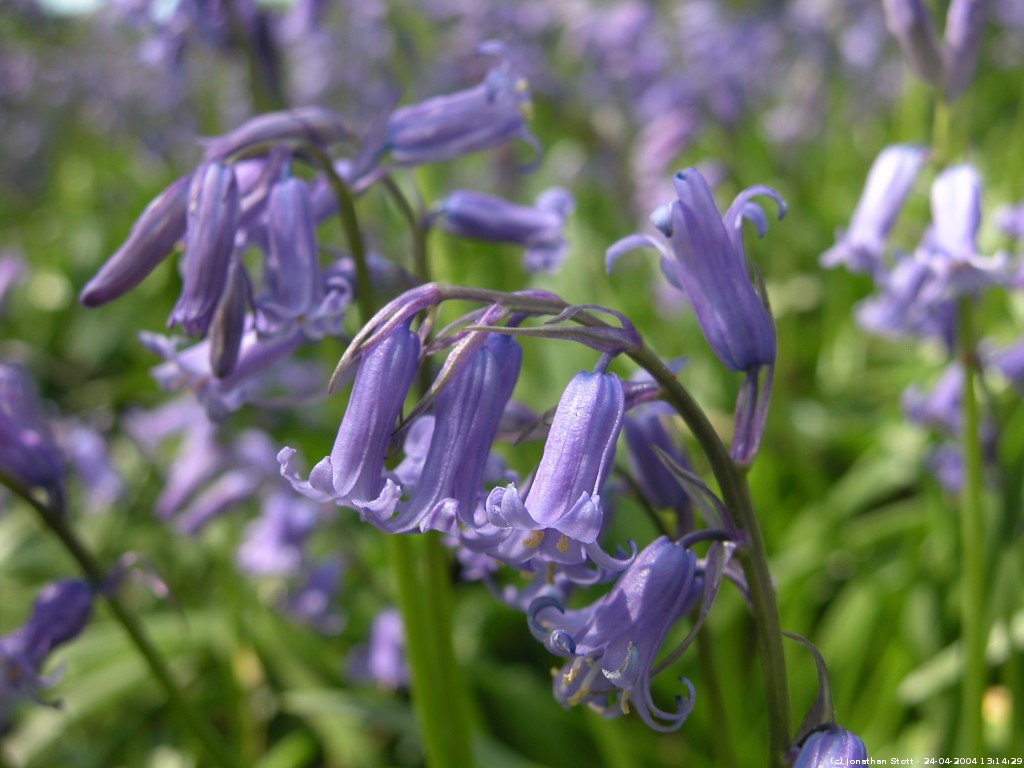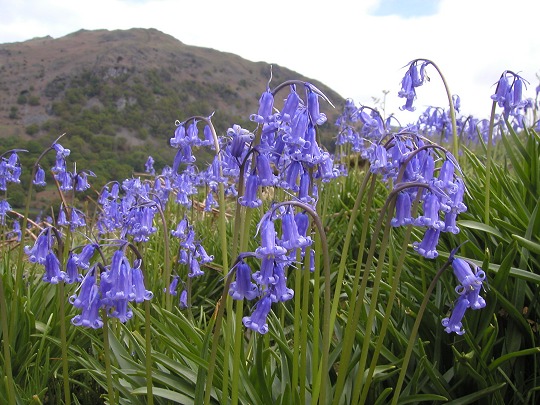Hyacinthoides non-scripta
Atlantic bluebell ( Hyacinthoides non-scripta )
The Atlantic bluebell ( Hyacinthoides non-scripta ), also English bluebell is a early-flowering bulbous plant ( Geophyt ) from the kind of bluebells ( Hyacinthoides ) in the family of asparagus plants ( Asparagaceae ). This Western European type is used in scattered groups of trees as an ornamental plant and as a cut flower. It is in culture since 1594.
Features
The Atlantic Bluebell is a perennial, herbaceous plant, the plant height of 15 to 40, sometimes reaching up to 50 centimeters. This forms Geophyt onions as outlasting comprising in cross-section about 1 to 1.5 centimeters. From this develop in the spring of three to six undergraduate, linealische leaves. They are 20 to 50 inches long and 7 to 15, sometimes to 25 millimeters wide.
The inflorescence stem is round and smooth. Composed of six to twelve individual flowers racemose inflorescence is weak einseitswendig and hangs at the top over, nodding. The 14 to 20 millimeters long, hermaphrodite flowers are pendulous, stalked and very fragrant. The perianth is bell-shaped with narrow sharply curved corners. Its color is dark blue, rarely white or reddish. The outer stamens are attached in the middle of the bloom and are longer than the inner ones. The anthers are cream- white. The Atlantic bluebell flowers from April to May
Occurrence
The Atlantic bluebell is indigenous to Western Europe along the Atlantic coast of Central and Northern Portugal, in Western and Northern Spain as well as France to Ireland and the UK to Scotland before. Here, the species grows in fresh, nutrient-rich forests, where they often forms a showy spring aspect, especially in the UK.
In Central Europe and North America, it was mostly about Verwilderungen naturalized from garden crops.
In Germany you will find the largest stands of Atlantic hare bell in North Rhine -Westphalia and Lower Saxony. A particularly well-developed area is called the forest of blue flowers between Doveren and Baal in GER, going out at the conservationists believe that it is not caused by ausgewilderte garden plants.
Taxonomy
Synonyms for Hyacinthoides non-scripta are: Endymion non- scriptus (L.) Garcke, Hyacinthus non- scriptus L. and Scilla non-scripta (L.) Hoffmann. et Link
The Atlantic Hasenglöckchen forms with the Spanish bluebell ( Hyacinthoides hispanica) the morphologically identifiable hard and scentless Hyacinthoides hispanica bastard × Hyacinthoides non-scripta Hyacinthoides × = massartiana Geerinck (synonym: Hyacinthoides × variabilis PDSell ). This hybrid is very variable in their characteristics, but is in its characteristic value the Spanish bluebell closer. Cultured and feral plants often go back to that bastard.
Threats and conservation
The Atlantic bluebell is seen throughout Europe as not at risk. However, it is according to the Federal Wildlife Trade Regulation ( BArtSchV ) specifically protected in Germany. After the Wildlife and Countryside Act 1981, the kind in the UK is particularly protected, the picking is legal, however, the withdrawal will be punished by digging in wild stocks for commercial purposes.


.jpg)






